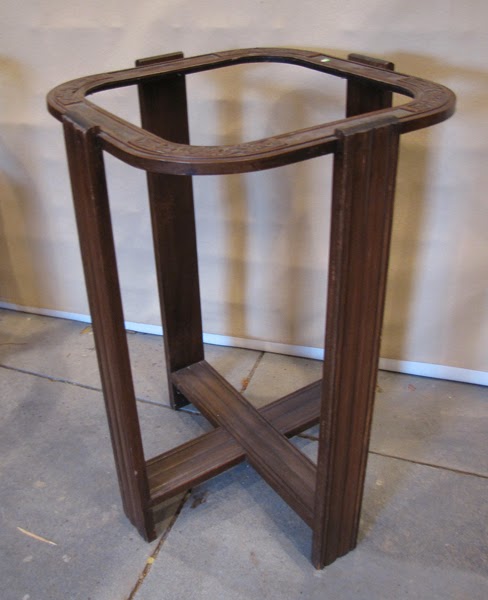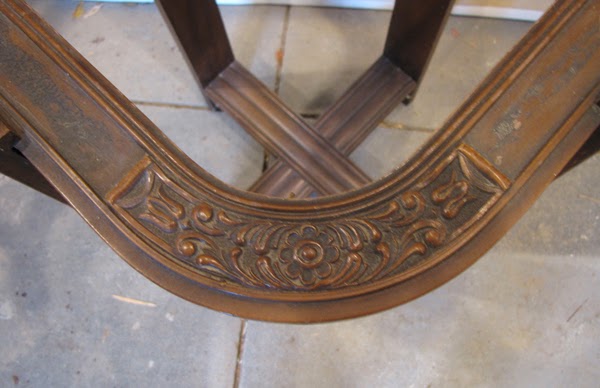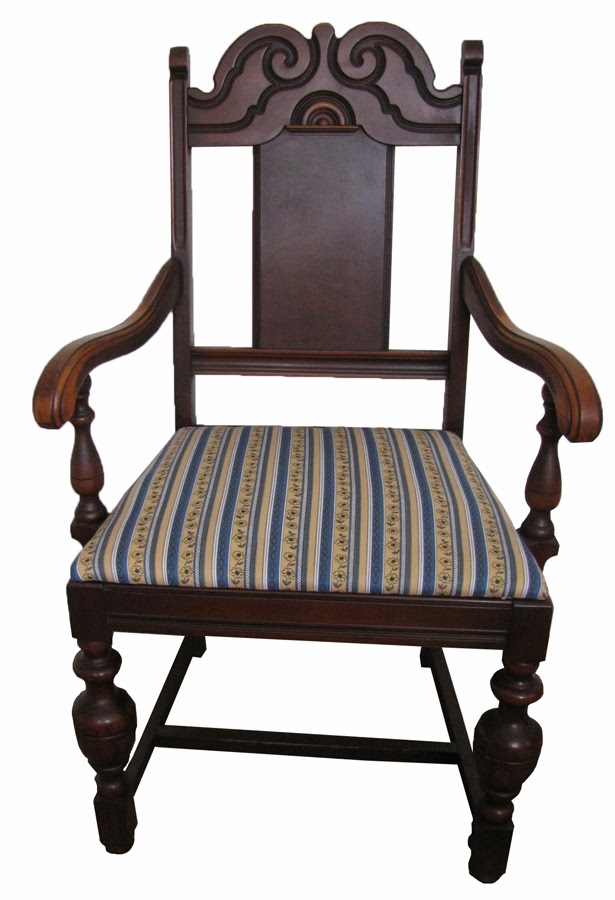 |
| Cedar Chest Before Restoration |
 |
| Cedar Chest After Restoration |
A few summers ago I went to an estate sale right around the block from my house. I wasn't looking for anything in particular, so you can imagine my surprise when I found this gem in the basement, covered with Christmas items! I quicklyran upstairs and asked the woman how much she wanted for the cedar chest. My heart was racing as numbers ran through my head. Surely, she'd ask at least $75.00 for it as it was well worth it. Other than surface scratches, it was in mint condition. The shelf on the interior was broken and its bottom was missing, but I examined it closely and found no broken veneer or other broken wood on the exterior. The interior looked as new as the day it was made and smelled strongly of cedar. I was so engulfed in my thoughts, I thought I misinterpreted what the woman had said about where it came from. I was already envisioning this beautiful 1940's chest restored to mint condition.
I asked her again how much she wanted for it and she tilted her head and said, "I don't know, how about $5.00?" I said, "Sold!" So I paid her for the chest and told her I'd be back in an hour with my husband and son to pick it up. Then I headed home in anticipation after I had message my two guys to make sure they don't stop anywhere on their way home from work because I needed them to pick up an item I'd purchased. Andy came over around 5:00, shortly after Jim got home from work and we all headed over to the estate sale on "Love" street, appropriately named for my lovely cedar chest. They loaded it up in the van and poor Andy had to squeeze between the chest and the seats since we had to put my "stow and go" seats down, but for the short trip home, it wasn't a biggie.
The cedar chest went right into the spare bedroom, but I got to work on the broken shelf right away. I repaired the broken side and replaced the bottom, then put it aside until I could get to the chest. With all the other project I was working on, I didn't get to the chest last year. I did some research on Lane cedar chests and discovered that each one has a serial number on the bottom. If you reverse that serial number, you have the date the chest was made. Mine was made on September 6, 1944.
Finally, this May, I stripped it down and refinished it completely. I lined the shelf with green felt and put it back inside and loaded it up with linens. I am now proudly displaying my $5.00 cedar chest in my spare bedroom. It was a once in a lifetime find and I'll treasure it for a long time!
 |
| Interior prior to fixing shelf |
 |
| Interior with shelf installed |




























